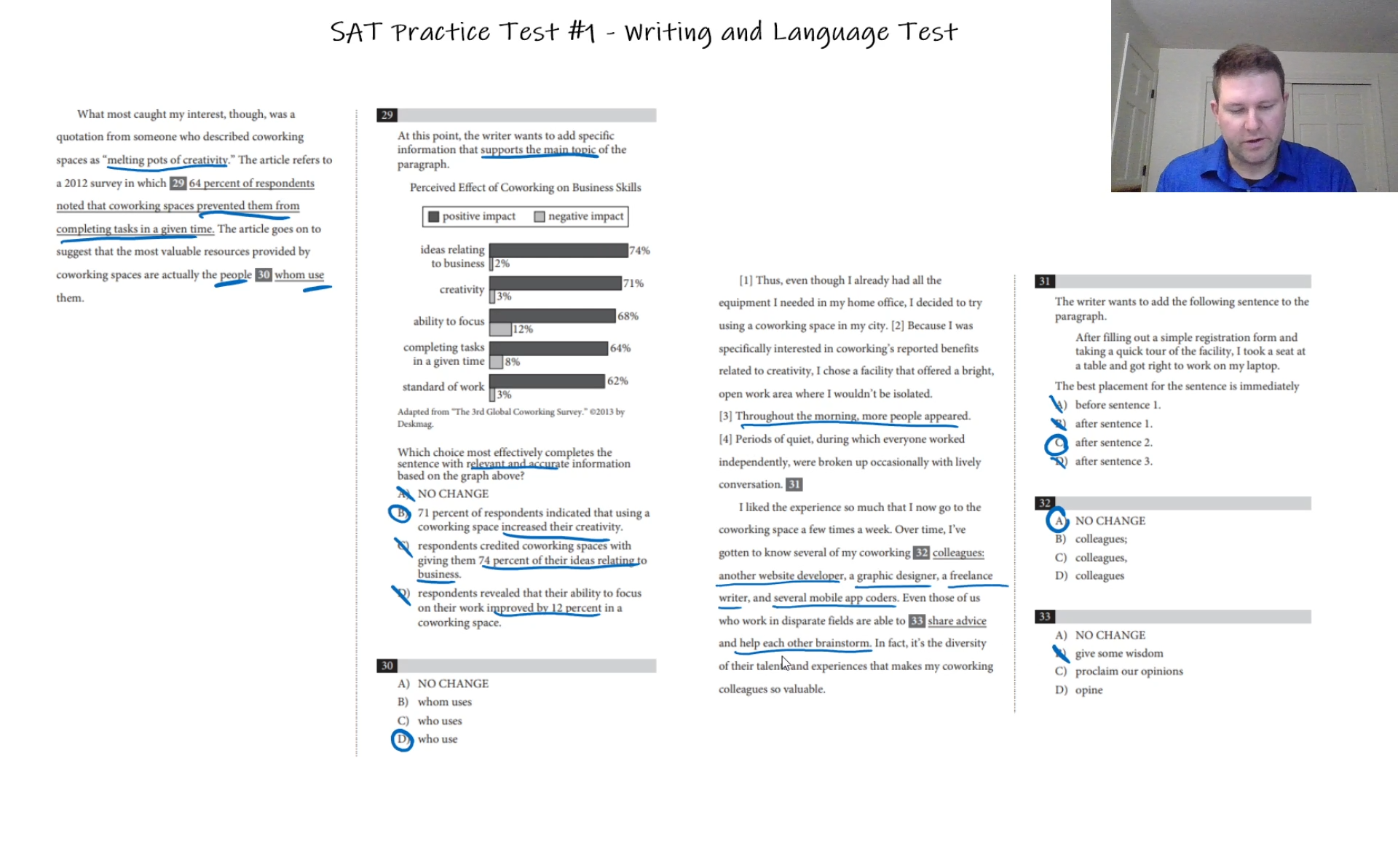Every… Single… Question… Expertly Explained
Reading
The reading section of the SAT is the most mysterious for some. Old English and science passages present themselves as considerably difficult to most students who have not grown up reading as a hobby and/or enjoying their English, history, or science classes.
Logic traps are a sneaky and unexpected presence on the test, luring students who have become proficient in reading between the lines, drawing connections, and making inferences while reading difficult material in high school. Unfortunately, these critical skills are almost a hindrance on the SAT, which requires students to prove their ability to exclusively “listen” through reading and answer questions based only upon what was articulated in the passage, leaving behind the advanced reading techniques they’ve honed over years of dissecting novels in English class. It’s a backwards and unfamiliar feeling for most: refusing the temptation to dive headfirst into an answer that makes broader connections to contemporary or historical issues.
Thankfully, there are many ways around this. You can untrain your tendencies to gravitate toward peacocking answer that use flowery vocabulary or paraphrase portions of the text that are irrelevant to the question.
Writing and Language
Establishing a keen understanding of the most practical grammar rules is a crucial starting point for improving on this section. There is a definitive list of grammar concepts that the SAT tests on, and mastering these rules systematically is step one in preparing to ace the section as a whole.
About 70% of the questions in the writing and language section are grammar-based questions, ranging from subject-verb agreement to misplaced modifiers to punctuation. The remaining questions fall into a category that could be broadly characterized as “author’s craft.” These require students to dramatically switch gears in terms of the way they approach the question. For most of the test, students are using their “ear” to eliminate awkward and/or grammatically incorrect answer choices on the grammar questions. When they stumble on an author’s craft question, they have to resist the temptation to choose the nicest-sounding answer choice and attend specifically to what the question is asking. This requires focus and discipline, both of which are helped tremendously by underlining, as we discuss in our videos.
Math
Students often think there is a difference in difficulty between the no calculator and calculator math sections… There isn’t. Thankfully, the no calculator math section doesn’t require students to compute anything ridiculous as the most challenging math they’ll have to do out by hand involves decimal multiplication and division, almost always with finite answers (no repeating or non-terminating decimals). And, for what it’s worth, rekindling your friendship with fractions will help avoid a whole host of issues created by converting to decimal form.
The math sections are the only portions of the SAT that progress in an entirely predictable order of difficulty. Where the questions on the reading and writing and language sections should be answered at point of contact, the tougher math problems can be saved for later so you can prioritize answering as many easy and medium questions as possible. All questions on the SAT are worth one raw score point if you answer them correctly, regardless of difficulty, so when it comes to the math section, it is crucial that you spend your time wisely on answering the lowest hanging fruit questions with confidence and save the hards for any leftover time you may have.







